ToriAvey.com contributor Sharon Biggs Waller just released a terrific historical novel called A Mad, Wicked Folly! Here she shares a historical Edwardian recipe that appears in the book.
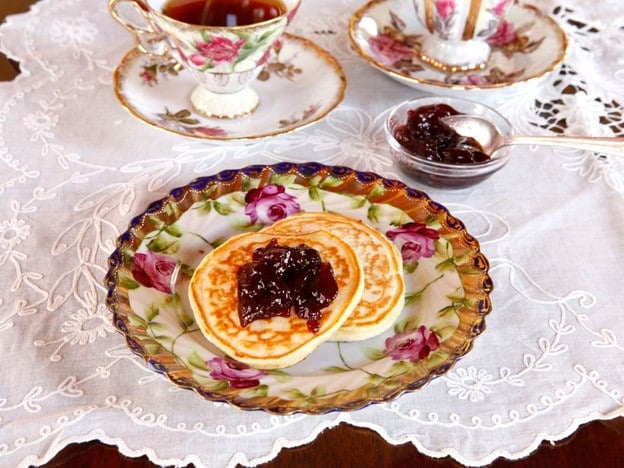
“I decided to go into the kitchen and snaffle some of our cook’s pikelets. I loved them, and Mrs. Kipling always made them up for afternoon tea.”
– A Mad, Wicked Folly (Viking) by Sharon Biggs Waller.
I first encountered the pikelet when I lived in England. I was watching Hugh Fearnley-Whittingstall’s TV show Treats from the Edwardian Country House, which highlighted goods from the Edwardian era. In the show, Hugh was making the pikelet, a type of pancake enjoyed at teatime. As a writer I loved the word, but I also loved the simplicity of this teacake compared to the other complicated Edwardian recipes such as the elaborate ice cream molds, called bombes, and the molded gelatins, called jellies. Right then I knew that my main character in A Mad, Wicked Folly, Victoria Darling, would adore pikelets. I loved them too, and so I included the recipe in my author’s notes at the back of the book.
Some would say the crumpet and pikelet are the same, especially those from the north of England. But traditionally, crumpets are cooked in a ring, which prevents them from spreading out, so they are thicker. Because pikelets spread out and are thinner, they tend to be crispy on the edges.
According to Merriam-Webster, the origin of the word pikelet stems from the Welsh bara pyglyd or pitchy bread, which was a dark, sticky bread. The word spread north into England and was anglicanized to pikelet.
Hugh Fearnley-Whittingstall’s recipe calls for fresh yeast (or dried yeast) and cream of tartar, but the self-rising flour in the following recipe simplifies and quickens the process.
Note from Tori: Serve these for breakfast or brunch with a side of homemade scrambled eggs!
Recommended Products:
We are a participant in the Amazon Services LLC Associates Program, an affiliate advertising program designed to provide a means for us to earn fees by linking to Amazon.com and affiliated sites. As an Amazon Associate I earn from qualifying purchases.
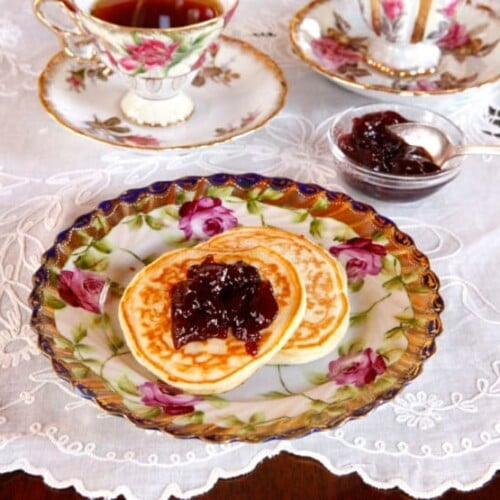
Victoria's Favorite Pikelets
Ingredients
- 1 cup self-rising flour
- 1 tablespoon sugar
- 1 large egg
- 1 tablespoon butter, melted
- 1/2 cup milk, or more if needed
NOTES
Instructions
- Sift the flour into a medium bowl and stir in the sugar.

- Make a well in the center of the dry ingredients and crack in the egg.

- Stir while pouring in the milk slowly until the batter comes together. Add more milk if you want thinner pikelets. (THK Note: We added an extra 1/4 cup of milk here) Stir in butter.

- Heat a griddle or skillet over medium heat, and coat with a small amount of cooking oil or spray. Drop a large spoonful of the batter onto the hot skillet. Flip when bubbles appear.

- Cook until browned on both sides. Serve warm pikelets with butter, honey or jam. Stored in a plastic bag, they will keep for up to three days. Best rewarmed before serving.

Nutrition

tried this recipe?
Let us know in the comments!
Learn more about “A Mad, Wicked Folly” here!

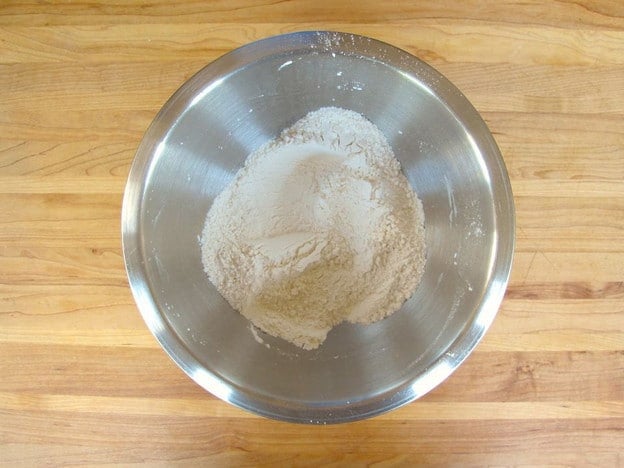
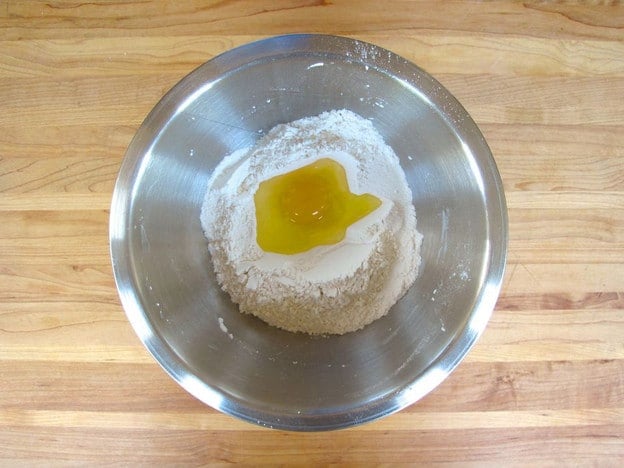
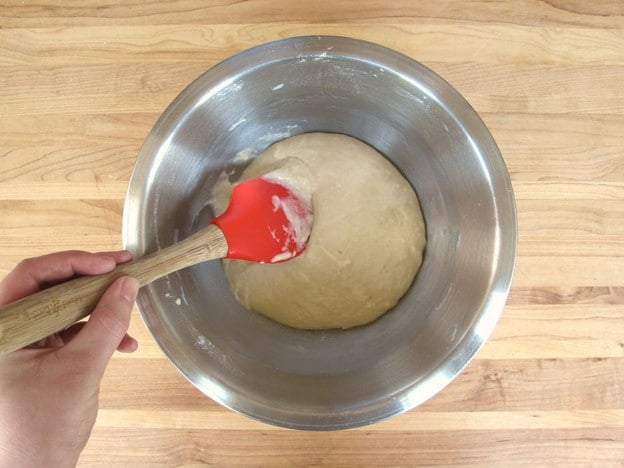
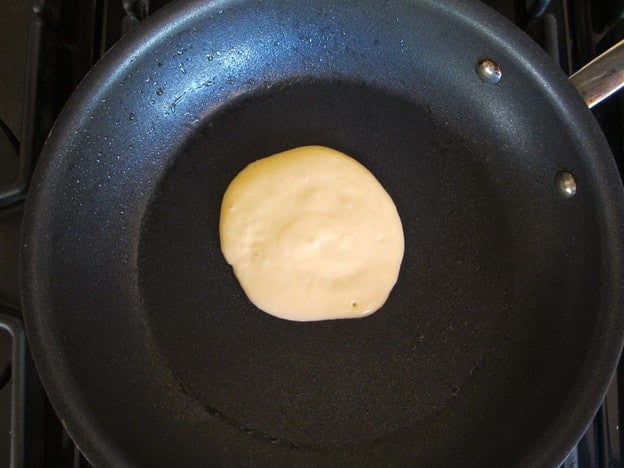



“Pikelet” was on the list for a food-related wordsearch I did last evening. Having married a Pike and not being familiar with the term, I looked it up and found this post. My reaction was, Oh, they’re pancakes. I read the comments thinking people might have suggestions and enjoyed your discussion. I’m American. We have a lot of variations on pancakes and, in general, have a lot of foods from different cultures, often a variation rather than authentic, as people couldn’t get traditional ingredients, experimented, or just wanted an easier version. The photo looks thicker than the pancakes I make for my kids, more like the sourdough pancakes my grandmother made adding baking powder. To me scones are baked treats as opposed to something fried on a griddle/pan, and crepes are thin French pancakes with very little leavening. I’ve had pancakes for Pancake Day dinner (the day before Lent, aka Shrove Tuesday, Fat Tuesday, Mardi Gras). Americans mostly eat pancakes for breakfast or brunch with butter and syrup (usually maple, or fake variations, though sometimes berry syrups). There are also fancy sweet concoctions with whipped cream and chocolate or fruit. [I also have a recipe for ‘zucchini pancakes’ my family made for dinner, American invention I’m sure.] I like mine with jam; I often also add sour cream (a trick to cut the sweetness I learned from a Norwegian breakfast spread). I’ll have to try these, and also look up the traditional version with yeast as I’ve never made pancakes with yeast. Whatever you call them at whatever time of day, enjoy everyone!
Beautiful pikelets, very easy to make, thank you
In Australian, this is a pikelet. A crumpet is very different – much thicker, different consistency, much higher with numerous holes across the top surface but with a crispy base when heated/toasted, made into a perfect circle by using a ring and can have various toppings from sweet to savoury on them. I’m not able to post a photo here but f you google ‘crumpet’ you will see they are very different looking, and tasting!
Pikelets are made with yeast, a crumpet mix but cooked without a ring so they are thinner.. THESE ARE NOT PIKELETS!!!!!! THESE ARE DROP SCONES, a very different thing
Hiya… great recipe. Bar one thing. Your wrong people from the north of England know the difference between a Pikelet and a crumpet. Just ask Betty tea rooms ☺. Other than that love it x
Hi , I really wish people wouldn’t confuse welsh picklets with crumpets or drop scones or welsh cakes or pancakes or crepes Each is different with different flavours , textures and ingredients and the recipes are different.
Unfortunately the modern versions of Welsh picklets you buy in the supermarket are so far removed from a traditional properly made welsh picklet that it’s no wonder non welsh folk have no idea of the true flavour.
My family are all Welsh, spanning generations, working in coal mines, living in coal workers cottages and baking the traditional Welsh picklet
The recipe I use is so old that one ingredient a type of raising powder you can’t even buy now a days I’ve even written to manufacturers to try to obtain some without luck.
Tradrditionally served warm, with butter not jam or honey as this was a luxury item which few coal mining families could afford, they were served at the tea table.
They must be baked on a Welsh flat iron on which has been well seasoned prior to use, and eaten whilst fresh and warm. If a day or two old they can turn a bit rubbery in texture.
Where i come from (Liverpool, Lancashire) a true pikelet is a savoury food and not a sweet scone or pancake type one which yours seem to be. I think some people are missing out on the superb original pikelets which are made using buttermilk, quick acting yeast, flour, salt, baking powder and water. Once made they can be eaten straight away spread with just butter or allowed to cool, stored and toasted/buttered later. You can even freeze them! They are much better than crumpets or scones/pancakes-dont put jam on them you’ll spoil the taste.
Pikelets and crumpets are a different texture since crumpets have yeast and are raised. Pikelets are more like pancakes and crumpets are thicker and chewier like bread. Pikelets are sometimes called drop scones in the Midlands and North. In Staffordshire we had the Staffordshire oatcake ( only found near Stoke-on-Trent ) which was another delicious meal, traditionally served with bacon, cheese, tomato. The oatcake maker would sell pikelets too which had raisins- they were served toasted with butter.
Looks amazing! My gran used to make me a version this when I was a kid. She learned it from her gran and we’re Asian so somewhere along the way there must have been another name. 🙂
These look delicious!
Sharon Crepes are French and I am British don’t know anything about American pancakes! 😀